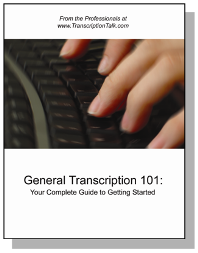There are many different kinds of keyboards out there. Choosing one that works for you is sometimes a matter of personal preference or could also be driven by sore wrists or an effort to avoid sore wrists. Whatever your reasons, it's important to know all the options.
First there is your standard fat and straight keyboard. This may be what most people are initially comfortable with because most of us learned to type on one of these or on a typewriter. ("Find your home row, everyone.") Perhaps you find this most comfortable, or perhaps you work off a laptop keyboard, making this your only option. It's definitely an option that several people choose as their personal preference.
Next in line come keyboards that have a slight curve to them. The Microsoft Laser Desktop 6000 is one of these. It curves the keys on either side up as if they were starting to split towards a full standard ergonomic keyboard model. This is the kind of keyboard I use, and I've found that it is quite comfortable. However, when people sit down at my computer to type they often stare at the keyboard for a few minutes trying to figure out why it looks different. Logitech also offers a curved variety of keyboard, but they also include a curve in a different way. The keyboard keys have a wave-like appearance if viewed from the side. These keyboards are designed to start you off in a "more ergonomically correct" position.
Next there is what is known as an ergonomic keyboard. Ergonomic keyboards come in a variety of different shapes and styles, but they are generally split and tilted up at the center. They are designed to promote ergonomically superior typing position that will minimize strain and pain on your wrists and other muscles. This is often a keyboard that people in professions such as transcription fall into because of the comfort level it provides. However, changing from a straight to an ergonomic keyboard can be a little clumsy. I've heard that if you just stick with it you'll be comfortable and never turning back in no time.
Finally, the Safetype keyboard and other models like it claim to be the utmost in ergonomic correctness. According to their website, the Safetype keyboard "eliminates the 3 most damaging positions: extension, deviation and pronation." While I find this keyboard intimidating, I'd love to give it a try and see how it works.
Later this week we'll see what other people think of their keyboards and why they chose what they did.














































2 Comments:
I *almost bought the SmartType but like you, I'm intimidated by it. Completely. I wish I could try it out first.
Still, I think when all my other keyboards kaput on me, I'm going to buy a Kenesis Countoured.
(http://www.kinesis-ergo.com/)
But that, too, requires a learning curve (also a pretty hefty dent in the wallet) but I think my arms, wrists, and tendons' health is worth it.
One of the problems that VERY few "ergonomic" keyboards address is the actual key distribution. Without going into the reasons for creating the QWERTY layout, it is dreadfully inefficient and creates so many problems.
http://www.maltron.com/
I've been using a Maltron keyboard since 1986, using the Malt letter distribution and although I started typing in 1967, and was able to do better than 65 wpm, I moved from 0 to 15 wpm touch typing within 6 weeks, but didn't lose my QWERTY facility. This is because the Malt layout is so logical it is very easy to learn.
If I'm forced to I can still touchtype with the old keyboard 20 something years later, because the Maltron didn't REPLACE the QWERTY, it was separate to it, because the Maltron FEELS so different there's no confusion between the two.
To give but one brief example of the inefficiency of QWERTY as opposed to Maltron, if the typist keeps the fingers on the home keys (including the thumbs) using QWERTY roughly 195 words can be typed, whereas with Maltron layout more than 7600 words can be typed.
http://www.maltron.com/maltron-advantage-dual.html
Further, many keyboards STILL have the "staggered column layout" even though the necessity for this disappeared with invention of electric typewriters. The staggering creates thousands of completely unnecessary side-to-side microshifts of hands and fingers.
As far as cost goes, I'm still using the SAME keyboard I bought in 1986, although I had to have the internals replaced and extra keys added when I moved from Apple II to IBM in the late '80s. I've never had any sort of failure, so although it was expensive to purchase initially, when amortised over the whole life of the keyboard it's probably cost me about $40-50 (Australian) per year.
Joe
Post a Comment